第150章 NOTES(12)
[374]--This was apparently the usual route for travellers from the coast to Vijayanagar.Fr.Luis used it for his journey from Cochin to the capital in 1509(above,p.123,and note).
[375]--Probably Sandur,about 120miles from the coast at Bhatkal.Sandur is a small Mahratta state 25miles from Vijayanagar.
[376]--That is,on the east of Portuguese India,west of the territory of Vijayanagar.
[377]--Unidentified.The great tree was of course a banyan.
[378]--Coromandel.This name was applied by the Portuguese to the Eastern Tamil and Southern Telugu countries.It had no well-defined limits,and often was held to extend even as far north as to the Krishna river,or even to Orissa.Yule and Burnell adhere to the now generally received definition of the name from CHOLA-MANDALA,the country of the Cholas (Glossary,S.V.Coromandel).
[379]--Orissa.
[380]--COMQUISTA COM is evidently an error for CONFINA COM.The same word is used three times in the next paragraph.
[381]--The Adil Khan,Sultan of Bijapur.The name is sometimes written by the Portuguese IDALXA (XA for Shah).We have numberless spellings in the old chronicles,thus,HIDALCAN,ADELHAM,&c.
[382]--For Nizam-ul-Mulkh,or the Nizam Shah,the Sultan of Ahmadnagar.Similarly the Qutb Shah of Golkonda is called in these chronicles "Cotamaluco."The Imad Shah of Birar is called the "Imademaluco,"or even "Madremaluco,"by the Dutch (Linschoten)and Portuguese.The Barid Shah of Bidar is styled "Melique Verido."[383]--The spelling of the name in the original is very doubtful.First it reads ARCHA,on the next occasion it is undoubtedly DARCHA.The third mention of the place calls it LARCHA.But in each case the R is not very clear,and might be an I undotted.Moreover,the C may possibly be an E,and the name may be ARCHA or DAREHA.If we should accept the latter,we may identify it with Dharwar,and believe it to be the same as the DUREE of Nuniz (below,p.292).
[384]--PRANHAS in original,probably for PIANHAS or PEANHAS (see below,p.288).
[385]--JOGIS,Hindu ascetics.
[386]--This probably refers to the Egyptian obelisk at St.Peter's.
[387]--Evidently the god GANESA.
[388]--"Bisnaga,"the Portuguese rendering of VIJAYANAGAR,the "city of victory."The spellings adopted by different writers have been endless.We have Beejanugger and Beejnugger in the translations of Firishtah;Bisnagar,Bidjanagar,Bijanagher,amongst the Portuguese;Bicheneger In the writings of the Russian Nikitin;Bizenegalia in those of the Italian Nicolo dei Conti.
[389]--BUQUEYROIS.The word implies something dug out,as opposed so redoubts,which would be built up.
[390]--Dakhan.
[391]--This is Nagalapur,the modern Hospett (EPIG.IND.,iv.267).
[392]--This tank or lake is described by Nuniz (see p.364).
[393]--HUU TIRO DE FALLCAO,a shot from a falcon,an old piece of artillery.
[394]--BREDOS,"blites,"an insipid kitchen vegetable.But as the word is not common,and as Brahmans make use of most vegetables,I have preferred the more general term.
[395]--MACAAS,literally "apples."
[396]--It was generally called Nagalapur,but Nuniz says that the lady's name was Chinnadevi (below,p.362).
[397]--CORUCHEES.See p.200,note 3.
[398]--GRANDES SUPITOS.
[399]--A mixture,apparently,of MAHA,"great,"and "Shah."[400]--The passage that follows is not very clear in the original.
[401]--The word last used is SELLADOS,literally "sealed."[402]--ALJOFAR.This word is constantly used in the chronicles.Garcia da Orta (COLLOQ.xxxv.)derives it from Cape Julfar in Arabia,near Ormuz.Cobarruvias says it is from Arabic jauhar,"jewel"(Yule and Burnell Dict.).Da Orta writes:"CHAMA-SE perla EMCASTELHANO E perola EM PORTUGUEZ,E EM LATIM unio,E ISTO NO aljofar GRANDE;PORQUE O MIUDO CHAMA-SE EM LATIM margarita,E EM ARABIO lulu,E EM PERSIO E NEST'OUTRAS GERACOES DA INDIA moti,E EM MALAVAR mutu,E EM PORTUGUEZ E CASTELHANO aljofar;"I.E.a large pearl is called PERLA in Spanish,PEROLA in Portuguese,UNIO in Latin;a small pearl is called in Latin MARGARITA,in Arabic LULU,in Persian and many Indian languages MOTI,in Malayalam MUTU,and in Portuguese and Spanish ALJOFAR.
[403]--EMGELLYM,sesamum or gingelly,an oil seed.
[404]--This was the great Saluva Timma,Krishna Deva's minister.The termination -RSEA probably represents ARASA,the Kanarese form for Rajah.TEMERSEA =TIMMARASA =TIMMA RAJAH.
[405]--According to Correa,Christovao de Figueiredo had been sent by the governor,Lopo Soares,in 1517to Vijayanagar as factor,with horses and elephants (LENDAS DA INDIA,ii.509--510);but Senhor Lopes points out (Introduction to his CHRONICA,lxxxii.note)that we do not know how far this assertion is true.He certainly lived at Goa,and not long after this battle was made chief TANEDAR of the mainlands of Goa,with residence at the temple of Mardor.He was several times in peril at the hands of the Mussalmans,and in 1536was present at the battles which took place between the Portuguese and Asada Khan of Belgaum,with whom he was on terms of friendship.Mr.Danvers (ii.507)states that he was also at one time attorney of the factory of Goa.
[406]--This apparently refers to Ruy de Mello (see above,p.142ff.).If De Sequeira were meant he would have been called "Governor."[407]--HORGAOS.Mr.Ferguson points out that these were undoubtedly musical instruments.Castanheda (v.xxviii.),describing the embassy to "Prester John"under Dom Roderigo de Lima in 1520(the same year),states that among the presents sent to that potentate were "some organs and a clavichord,and a player for them."These organs are also mentioned in Father Alvares's account of their embassy (Hakluyt Society Trans.,p.10).
[408]--PATECA,something worn round the neck.There appears to be some mistake here,as PATECA means "a sort of long robe or gown (worn)in India"(Michaelis'Dict.).